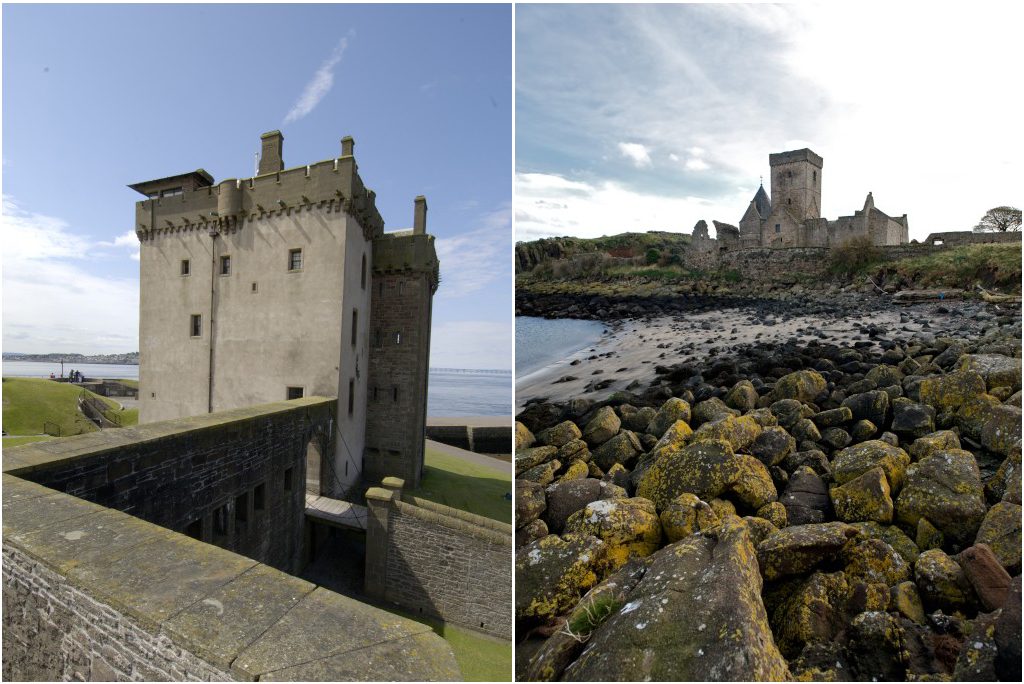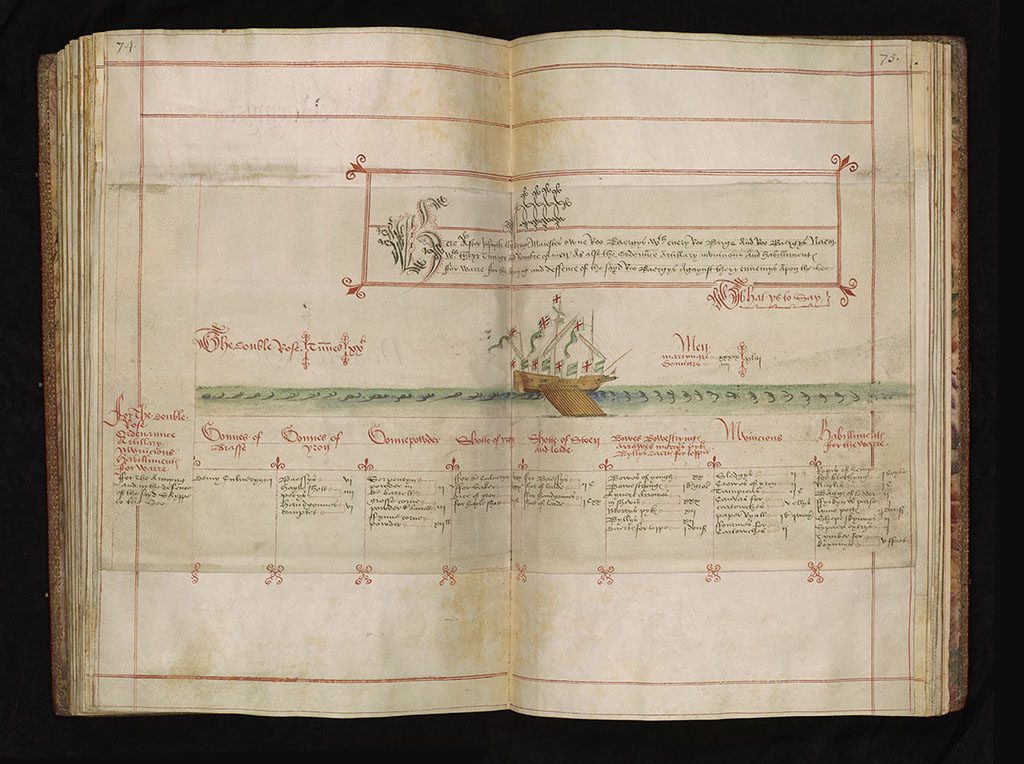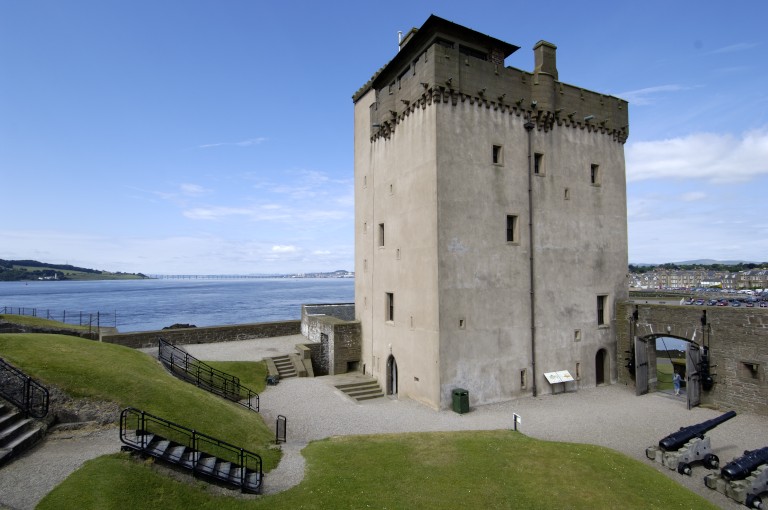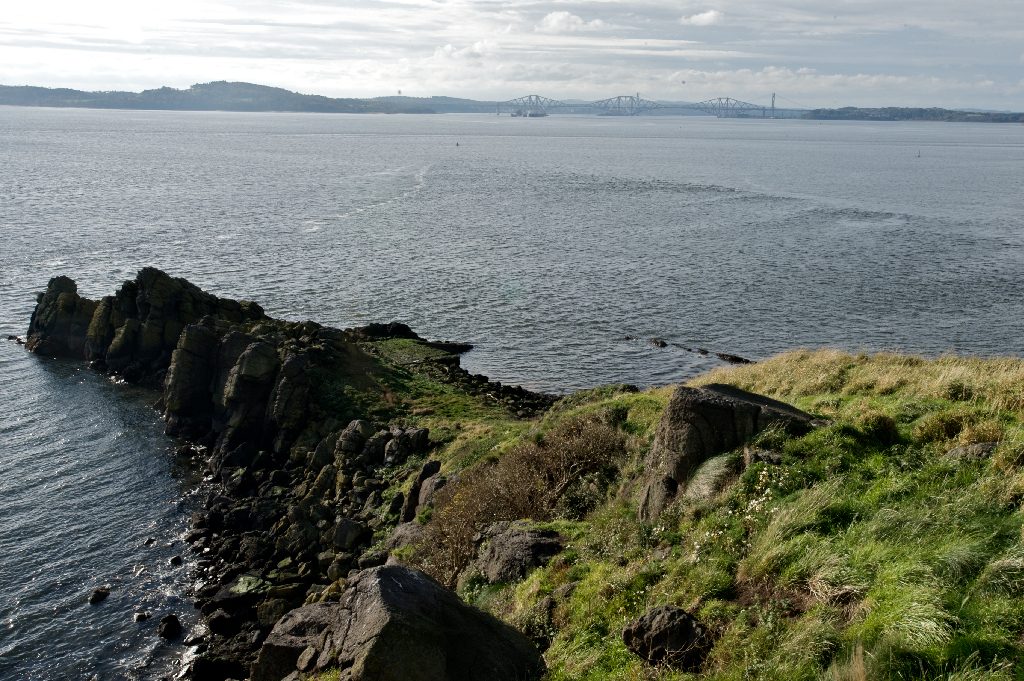What do a 16th century tower house near Dundee and a 13th century monastery in the Firth of Forth have in common? Tudor warships!
Whilst Broughty Castle and Inchcolm Abbey don’t sound as if they’d have much in common, they share a lot of their later history. We’ve been working with independent historians to review the Statements of Significance about all our sites, and recently uncovered a fascinating story linking these two.

To look at them Broughty Castle (left) and Inchcolm Abbey (right) don’t seem much alike
Tough Love
Both sites were occupied by the English during the wars of the Rough Wooing. This was England’s attempt to bludgeon Scotland into agreeing a marriage between the infant Mary Queen of Scots and Edward VI.
During the campaign, English forces established bases across Scotland while the Scots and their French allies mounted counter attacks. The Firths of both the Forth and the Tay were key strategic locations during the conflict.
Tudor Warships!
In 1547, a garrison of 150 men under Sir John Luttrell established a base on Inchcolm Island, aiming to control shipping on the Forth. They built ramparts and gun platforms, which you can still see traces of today. Luttrell had two small Tudor warships at Inchcolm: the Saker and the Double Rose. You can see them in an illustrated manuscript of 1546 held by the British Library.

Image reproduced by permission of the Pepys Library, Magdalene College Cambridge
The Double Rose had crew of 39. Four gunners were armed with cannon, including the ‘bastard culverins’. This was a type of brass cannon which fired a twelve-pound shot. Similar guns were salvaged from the Mary Rose.
Accounts from the time tell us the Double Rose spent most of her time at anchor. This was because the island was effectively besieged by a flotilla of Scottish privateers! In March 1548, the English withdrew. A few months later the French took control, though they based themselves at Inchkeith not Inchcolm.
Sir John Luttrell

The Samuel Courtauld Trust, The Courtauld Gallery, London
This allegorical painting shows Sir John Luttrell wading through the sea towards a rocky shore, shaking his fist at Peace, while a ship founders in the background. The ship has been identified as the Mary Hamborough, which was crippled by a storm during his evacuation of Inchcolm in 1548. You can see it in the collections of the Courtauld Gallery in London.

Inchcolm on a more peaceful day
After withdrawing from Inchcolm, Luttrell went on to command the English garrison at Broughty Castle. In 1550 he was forced to surrender Broughty to the Scots, an act witnessed by Mary of Guise, widow of James V.
Luttrell was held prisoner until the English paid a ransom for his release. Despite the defeats, he was not disgraced. He retired with his reputation as a commander and diplomat intact.

Broughty Castle – an important military base
Inchcolm Abbey and Broughty Castle continued to be important military bases over the next 400 years. If you’re visiting, the most visible military remains you’ll see are from the two world wars. Ramparts, concrete batteries, lookout posts, tramways and tunnels from that period all still survive.
But that’s a blog post for another day!
We’d like to thank independent historian Arkady Hodge, who has been carrying out research to help update our Statements of Significance, for finding this story!

